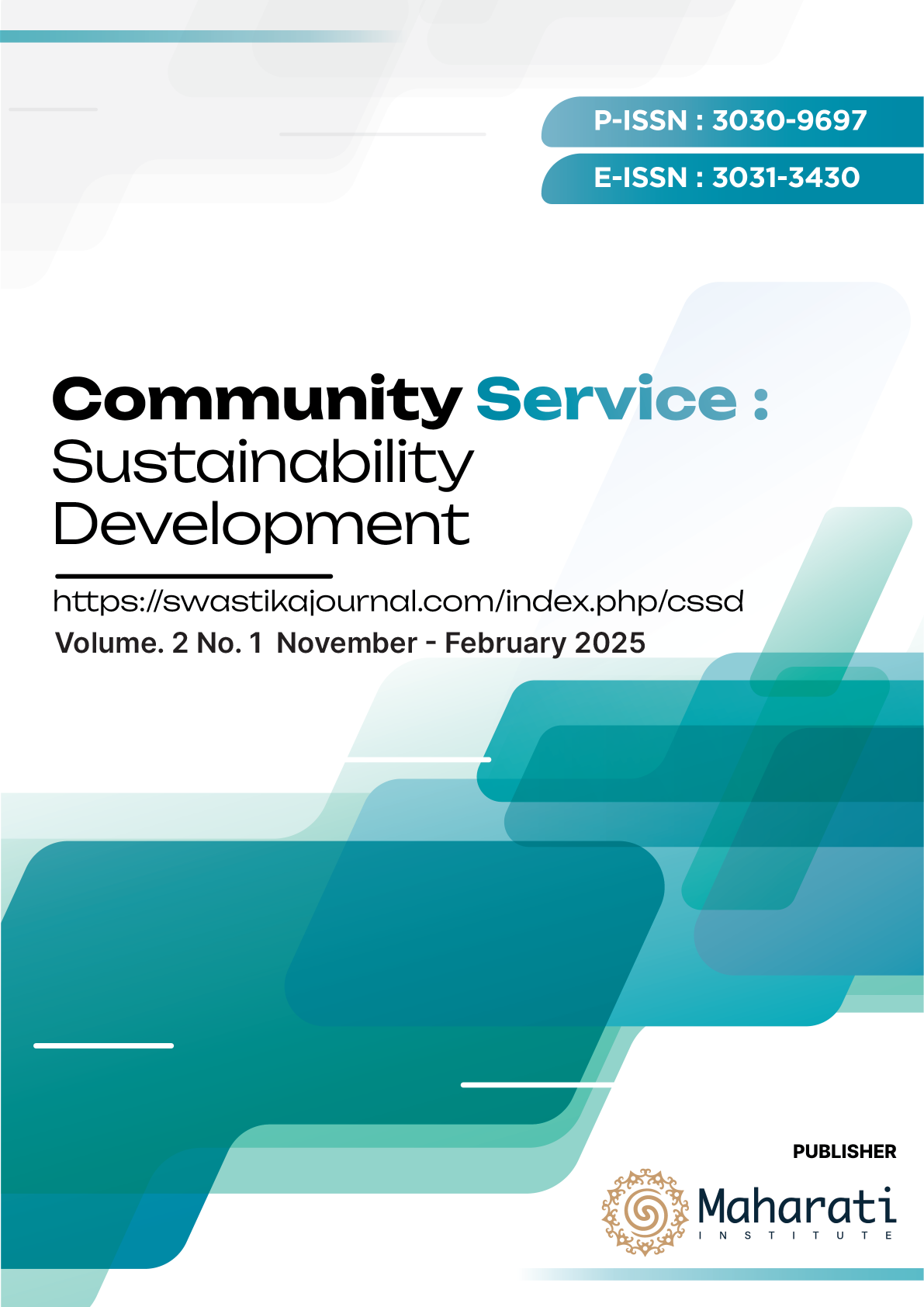Psychoeducation in Students of Jeron Elementary School with Behavioral Disorders Using the Application of Token-U Technique
DOI:
https://doi.org/10.61857/cssdev.v2i2.121Keywords:
U-Economic Token Technique, Behavioral Disorders, Positive Reinforcement, Psychoeducation,, Elementary School StudentsAbstract
This study aims to analyze the application of the Economic-U Token technique in psychoeducation in students of SDN Jeron Boyolali who experience behavioral disorders. This study uses an experimental method with a pretest-posttest design to assess changes in student behavior after the application of the U-Economy Token technique. The subject of the study was a student of SDN Jeron Boyolali, who was identified as having a pretest-posttest design to assess changes in student behavior after the application of the U-Economy Token technique. The subject of the study was a student of SDN, Jeron Boyolali, who was identified as having a behavioral disorder. The results of the study show that the application of the Economy-U Token technique is effective in increasing students' positive behavior, reducing the frequency of aggressive and destructive behavior, and improving social interaction between students, classmates and teachers. In addition, students showed improvement in their ability to follow the rules and increased engagement in learning activities. However, this study also found challenges in terms of the consistency of application and students' dependence on external factors that can affect the sustainability of behavior change in the long term. This study concludes that the Economy-U Token technique can be one of the effective methods in psychoeducation to deal with behavioral disorders in elementary school students. This research provides important insights for educators and professionals in the field of educational psychology to integrate positive reinforcement techniques in an effort to improve student behavior and support their social-emotional development.
References
American Psychiatric Association. (2013). Diagnostic and statistical manual of mental disorders (5th ed.). American Psychiatric Publishing.
Basuki, S. (2010). Metode Penelitian. Penaku.
Briesch, A. M., Chafouleas, S. M., & Riley-Tillman, T. C. (2022a). Handbook of response to intervention: The science and practice of multi-tiered systems of support. The Guilford Press.
Briesch, A. M., Chafouleas, S. M., & Riley-Tillman, T. C. (2022b). Multi-tiered systems of support: Integrating behavioral interventions in schools.
Dupaul, G. J., & Weyandt, L. L. (2021). Students with attention deficit hyperactivity disorder: A handbook for teachers and clinicians. Guilford Press.
Kazdin, A. E. (2012). Behavior modification in applied settings. Waveland Press.
Lee, J., & Wang, T. (2023). Advancements in token economy interventions for educational settings. Journal of Educational Psychology, 115(4), 671–686.
McDaniel, S., & Tressler, M. (2022). Effective strategies in classroom management: The role of positive reinforcement. Contemporary Educational Psychology, 48, 100–113.
Skinner, B. F. (1965). Science and human behavior (Issue 92904). Simon and Schuster.
Templeton, G. F., Lewis, B. R., & Snyder, C. A. (2002). Development of a measure for the organizational learning construct. Journal of Management Information Systems, 19(2), 175–218. https://doi.org/10.1080/07421222.2002.11045727
Downloads
Published
Issue
Section
License
Copyright (c) 2025 Ela ROSALINDA

This work is licensed under a Creative Commons Attribution-NonCommercial 4.0 International License.
Creative Commons Attribution-NonCommercial 4.0 International License.














